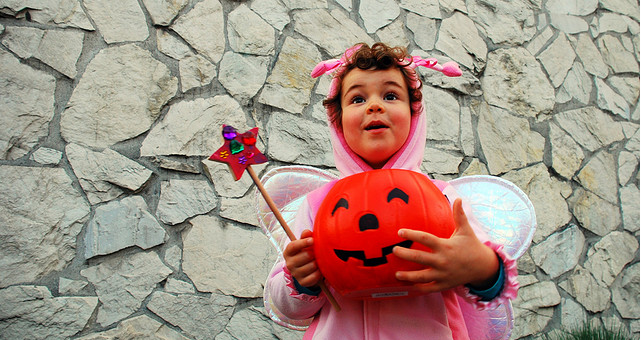Why Do We Go Trick-Or-Treating On Halloween When Candy Is Tasty All Year? Image courtesy of (James Callan)
Gazing out on the sea of Sexy So-And-Sos in knee socks and armed with excuses, amid the sound of the doorbell constantly ringing and shrilly demanding your candy sacrifice be made at the altar of yet another kid dressed as Buzz Lightyear, it can be hard to find a reason for it all. Why do we dress up? Why do we go begging for candy on this one night of the year, when candy is readily available all year round?
Those who’ve been around a while might know that Halloween has its root in All Hallow’s Eve, or even going further back to the Celtic times in Britain and Ireland, Samhain, notes MentalFloss.com in its very illuminating explanation.
Then there’s the practice of going door-to-door asking people if they want to give you candy so you don’t pull a trick on them. If this happened any other time of the year, doors would be slammed in faces and the authorities would be called. But how come it’s okay on Halloween?
Trick-or-treating is only on Halloween perhaps because the ancient Celts wanted to make nice with the ghosts on the one day that the worlds of the living and the dead overlapped, Samhain, so that they wouldn’t start pulling tricks on the local druids. And everyone knows you can easily appease ghosts with a bucket of candy, or more likely, a nice fat goat treat.
As for the costumes — by wearing masks or other outfits that resembled spirits, demons and the like, the Celts thought maybe they could trick the dead into thinking they were one of them.
Fast forward to Christianity being all the rage in the British Isles and mixing it up with Pagan customs. All Hallows’ Eve, All Saints’ Day and All Souls’ Day got smushed together on Samhain, morphing first into Hallowe’en and then Halloween.
Trick-or-treating as a door-to-door search for yummy stuff could date back the practice of “souling” in the Middle Ages, when poorer kids and adults would beg at the doors of local homes during All Soul’s and ask for food, money or prayers.
But of course, it was probably Western culture that took souling and turned it into the secular hunt for sugar we know and love today: The first known mention of “trick or treat” comes from a 1927 newspaper in Alberta that reported “youthful tormentors” at the back door and front, “demanding edible plunder by the word ‘trick or treat.'”
After the sugar rationing days of World War II were over, pop culture in America celebrated by bathing itself in a shower of sweet stuff every year.
Now if anyone can explain to me why it’s acceptable for grown adults to dress themselves as sexy versions of any object, animate or inanimate, without driving motivation of candy, I’m listening.
Why Do We Go Trick-or-Treating on Halloween? [MentalFloss.com]
Want more consumer news? Visit our parent organization, Consumer Reports, for the latest on scams, recalls, and other consumer issues.


